29 January 2014
Tramin (Termeno), Italy: a very dramatic rockfall
Posted by Dave Petley
The original Tramin (Termeno) rockfall
On 21st January about 4000 cubic metres of rock detached from a near vertical rock cliff at Tramin, South Tyrol, Italy. (This is the German speaking part of northern Italy – in Italian this place is known as Termeno in case you are confused by the reports). The rockfall appears to have been caused by the catastrophic collapse of a rock pillar. The major part of the debris consisted of a number of enormous boulders that slid and rolled down the slope before striking a 300 year old building below. SudTirol News has a nice image that provides an overview of the event, including the site of the original pillar and the track of the debris:
..
However, the best gallery of images of the Tramin rockfall (there are 12, and they are all classics) is on the Salto Wirtschaft website. This image shows the effects of one of the boulders on a 300 year barn, which it rolled straight through:
…
The boulder continued rolling downslope, and eventually stopped in a field. Interestingly, the other (even larger) boulder in the field is from an earlier event, so the level of hazard was clear:
..
Whilst this boulder stopped moving just as it reached the main part of the building – a very lucky escape for the house and its occupants:
..
A really interesting aspect of this event at Tramin is the nature of movement of the boulders. They have both left extremely deep furrows in the soil, but I am sure that they were rolling rather than sliding, and hence the undulating nature of the levies on either side of the track:
..
Mitigating the remaining hazard at Tramin
The rockfall left a tower of rock in place that needed to be mitigated, so over the last few days blasting has been undertaken to try to remove the remaining material. This UAV video shows rather nicely the site and the dangerous pillar:
Whilst this video (which I cannot embed) shows the effects of some of the blasts, including much smaller boulders tumbling down the slope.
Acknowledgement
Thanks to Dr Bill Murphy of the University of Leeds for pointing this one out to me.


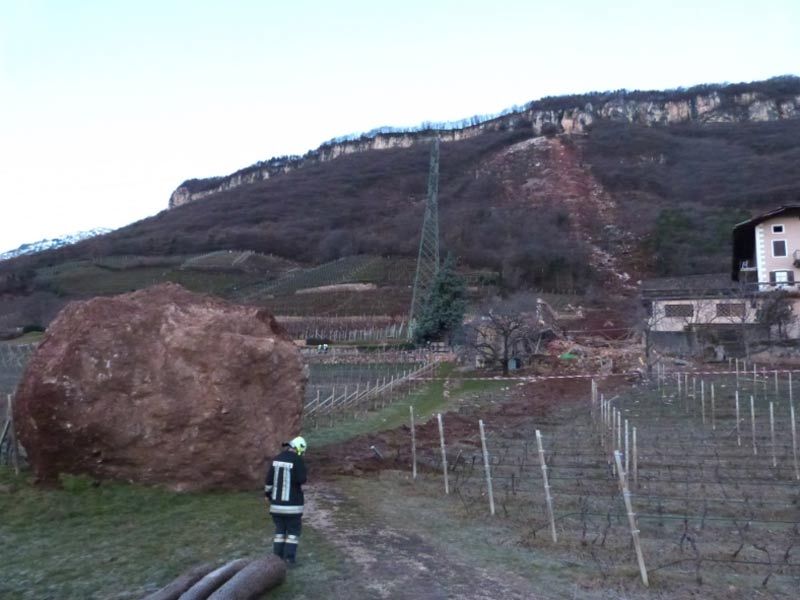
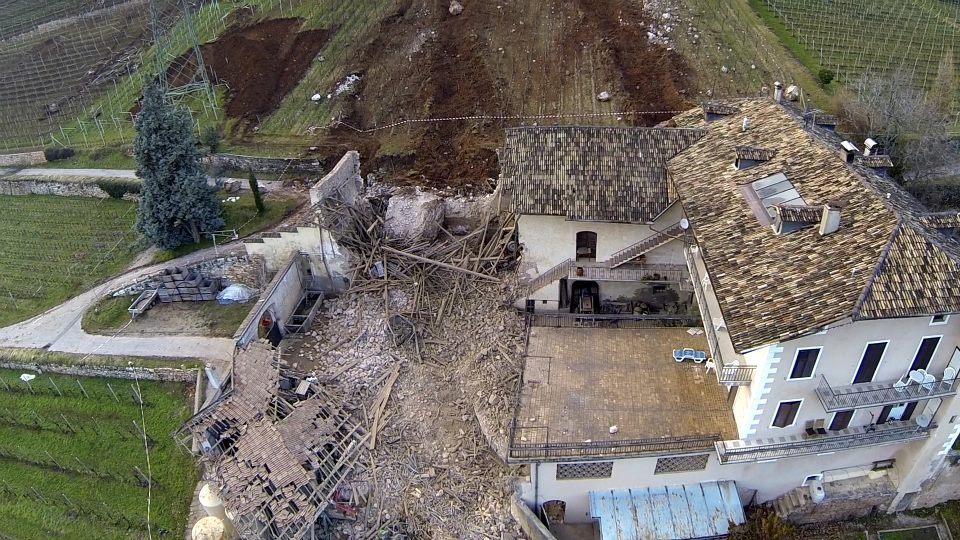
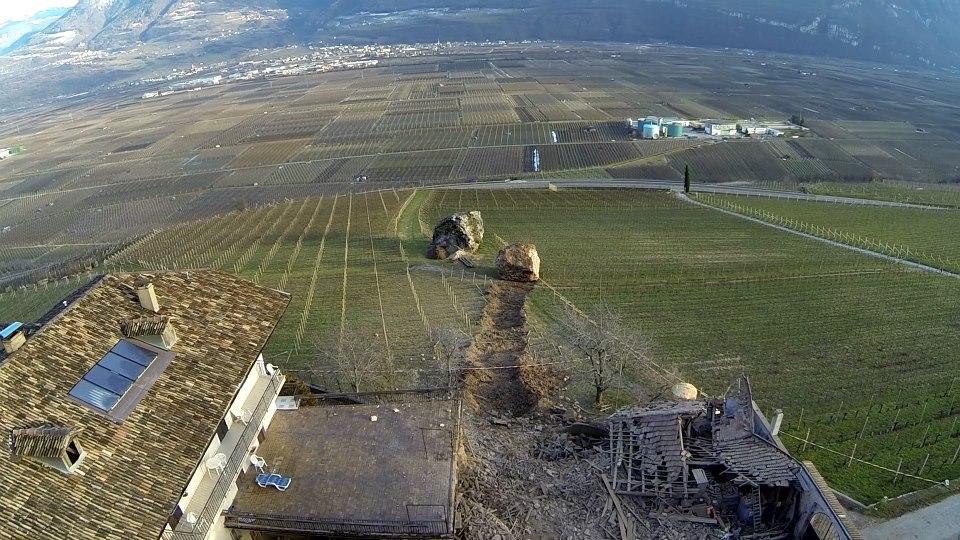
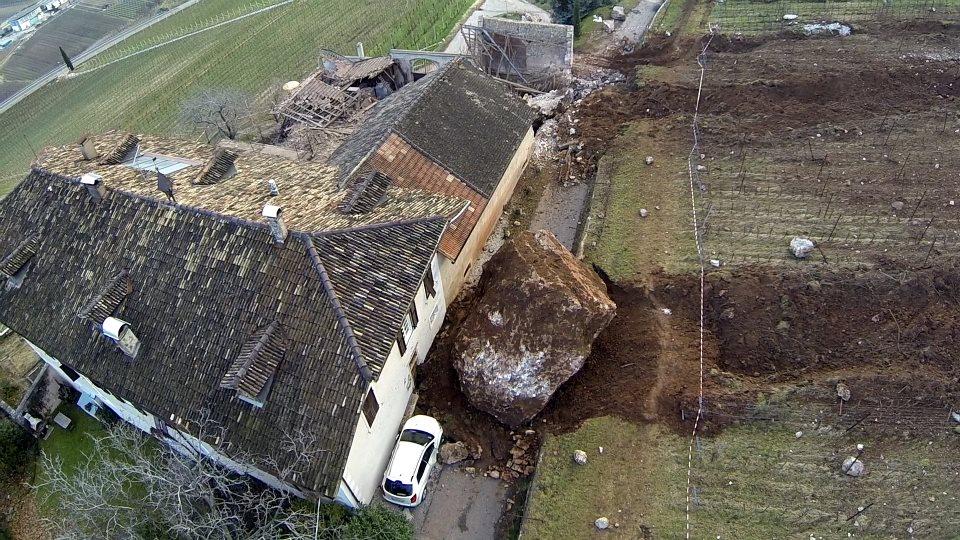
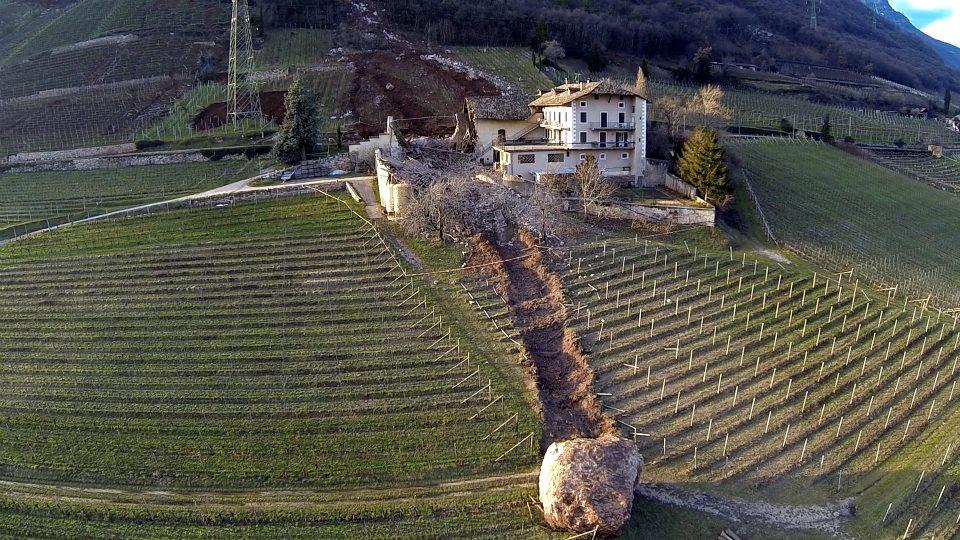
 Dave Petley is the Vice-Chancellor of the University of Hull in the United Kingdom. His blog provides commentary and analysis of landslide events occurring worldwide, including the landslides themselves, latest research, and conferences and meetings.
Dave Petley is the Vice-Chancellor of the University of Hull in the United Kingdom. His blog provides commentary and analysis of landslide events occurring worldwide, including the landslides themselves, latest research, and conferences and meetings.
Next to the rock farthest down slope rests another with no trail, indicating that it is a remnant from a previous rockfall at the same location..
[Thanks for your comment – I made the same observation above (but easy to miss between the photographs). Interestingly the track of that boulder would probably have taken it through the main part of the building. It is amazing how rarely people take the location of existing boulders into account when formally or informally assessing hazard.
Incidentally, originally there would probably have been many more boulders in the fields, but most were probably removed to create the agricultural land (and to provide material for construction). That one was probably just too large to move.
Thanks again for your contribution – D.]
More.